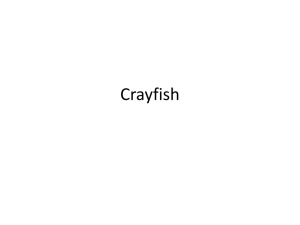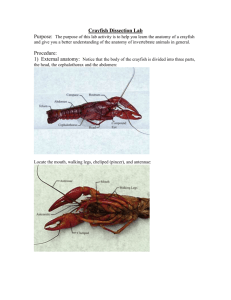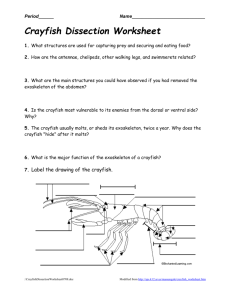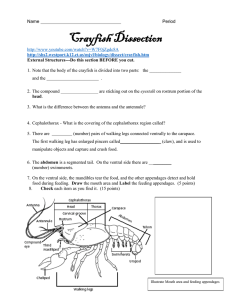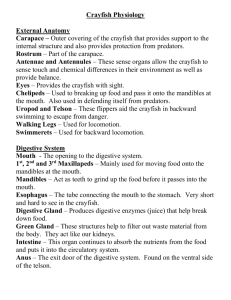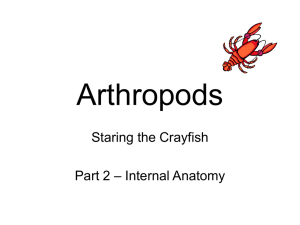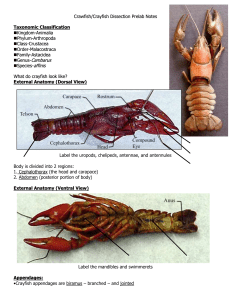Crayfish Lab Report: Anatomy and Dissection
advertisement
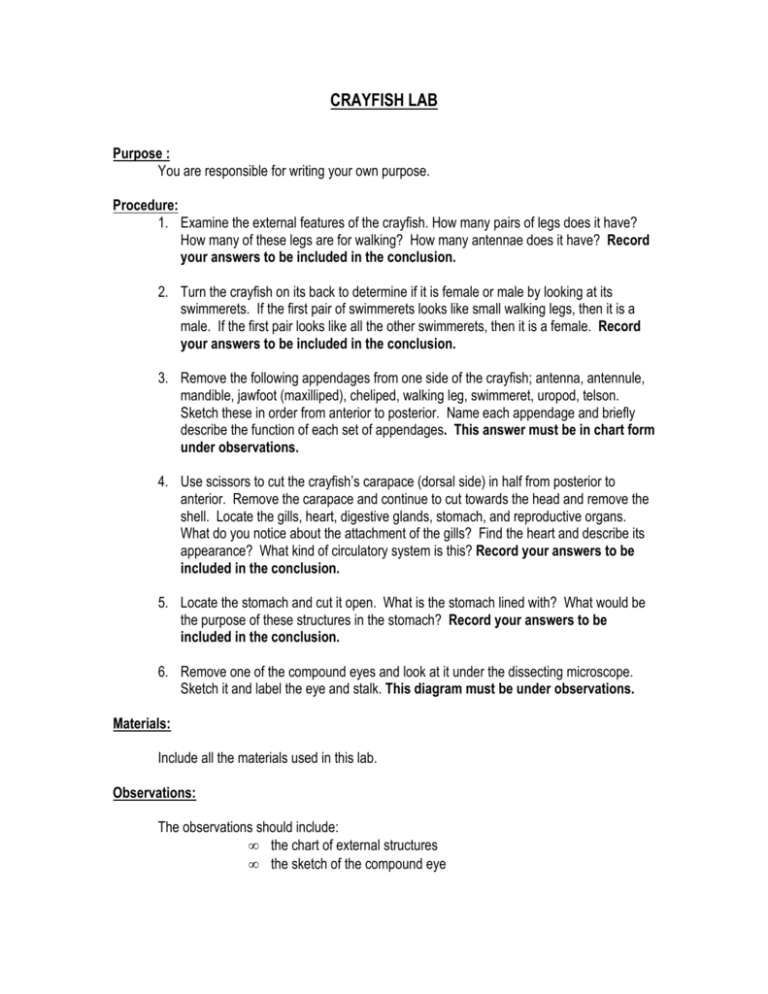
CRAYFISH LAB Purpose : You are responsible for writing your own purpose. Procedure: 1. Examine the external features of the crayfish. How many pairs of legs does it have? How many of these legs are for walking? How many antennae does it have? Record your answers to be included in the conclusion. 2. Turn the crayfish on its back to determine if it is female or male by looking at its swimmerets. If the first pair of swimmerets looks like small walking legs, then it is a male. If the first pair looks like all the other swimmerets, then it is a female. Record your answers to be included in the conclusion. 3. Remove the following appendages from one side of the crayfish; antenna, antennule, mandible, jawfoot (maxilliped), cheliped, walking leg, swimmeret, uropod, telson. Sketch these in order from anterior to posterior. Name each appendage and briefly describe the function of each set of appendages. This answer must be in chart form under observations. 4. Use scissors to cut the crayfish’s carapace (dorsal side) in half from posterior to anterior. Remove the carapace and continue to cut towards the head and remove the shell. Locate the gills, heart, digestive glands, stomach, and reproductive organs. What do you notice about the attachment of the gills? Find the heart and describe its appearance? What kind of circulatory system is this? Record your answers to be included in the conclusion. 5. Locate the stomach and cut it open. What is the stomach lined with? What would be the purpose of these structures in the stomach? Record your answers to be included in the conclusion. 6. Remove one of the compound eyes and look at it under the dissecting microscope. Sketch it and label the eye and stalk. This diagram must be under observations. Materials: Include all the materials used in this lab. Observations: The observations should include: • the chart of external structures • the sketch of the compound eye Discussion: 1a) Describe the digestive system in the crayfish. b) Why does the crayfish have such a short intestine? 2a) Describe the location of the gills. b) Why are the gills attached to the legs? 3. Why is it that having its eye on the end of a stalk is an adaptive advantage for the crayfish? 4a) What is the function of the green gland? b) Why is it located where it is? 5. Which structures adapt the crustacean to a fresh water lifestyle rather than a) a marine lifestyle? b) a terrestrial lifestyle? 6. What are three functions of the crayfish antennae? 7. What are the five (5) distinguishing characteristics of crustaceans? Conclusion: • • Why does the crayfish have a digestive gland when it already has an intestine? Include all the answers to the questions posed in steps 1,2,4, and 5 of the procedure. Make sure these answers are in complete sentences.
